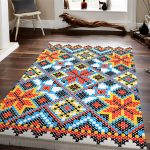
If you’ve ever been frustrated with the state of your home, you’re not alone. Many people are unhappy with their homes and don’t know what to do about it. However, there are simple, inexpensive ways to improve your house design and building without spending much money. This blog post will show simple ways to improve your home’s design.
Tip 1: Line up your furniture:
By lining up your furniture, you’re creating a clear path through the room (which is very important in keeping clutter to a minimum) and making it easier for guests to navigate their way around. It is especially useful if your home gets lots of company!
Unfortunately, sometimes, there isn’t enough space to line up your furniture. If this is the case for you, try arranging your furniture so that it is evenly spaced out rather than lined up—this could help make the room look less cluttered and still provide a clear path.
Tip 2: Slide doors can make for a more functional room:
Slide doors are a great way to add functionality to your home. If you have a room too big for the furniture and appliances you put in it, try using slide doors. You can use slide doors in kitchens and bathrooms, but they’re also useful in living rooms or bedrooms.
Here’s how you can create a sliding door:
- Measure your room and divide by two (the width of each side)
- Choose a material that will fit into this measurement (for example, if the height of your wall is 12 feet high and its width is 10 feet wide, then each side should be 6 feet long)
Tip 3: Daylighting makes rooms feel bigger and brighter:
There are countless benefits to using natural lighting. For starters, it’s free. And in addition to being free, daylight is full of energy that can help you feel more awake and alert. It also makes rooms look bigger and brighter compared to artificial light—which means that when choosing your home design features, you’ll want to include plenty of windows.
Not all windows are created equal; some rooms need smaller windows (like bathrooms) while others will benefit from larger ones (like dining rooms). In addition to using full-length windows in appropriate places throughout the house, consider adding mirrors near these areas so that light gets reflected into the room.
Tip 4: Add an outdoor living area:
If you don’t have an outdoor living area, adding one is a great way to make your home’s design and building feel more open. An outdoor living space can be as simple as planting flowers or trees in front of your house or as elaborate as building an entire deck with a gazebo or pergola.
Tip 5: Add lamps (best if they have no shade):
Lamps are great for creating a warm and inviting space. If you have a room with no natural light, try adding lamps without shades, so they don’t take up visual space. It is also important to ensure that your lamps are not too bright. If they are, you will have to turn them off or dim them so people can feel comfortable.
Tip 6: Add plants:
Plants can be a great way to bring life into any room—especially if you don’t have any windows! You can try adding some greenery on top of bookshelves or credenzas; this will help create the illusion of height and width, making the room appear larger than it is.
Tip 7: Add artwork:
Artwork is a great way to bring colour and life into any room. It’s also another way to make your space more open and welcoming.
Try adding artwork in different sizes and shapes—this will help make the room seem less boxed like it has been sectioned off from other parts of your home.
Conclusion
Home design is a constant work in progress. There are always new things to learn and improve upon as you go through your day-to-day life and routine. The tips above are just the beginning of what you can do to improve your house’s design and building. Keep them in mind as you design your space, and remember that it’s all just a matter of trying new things out!




